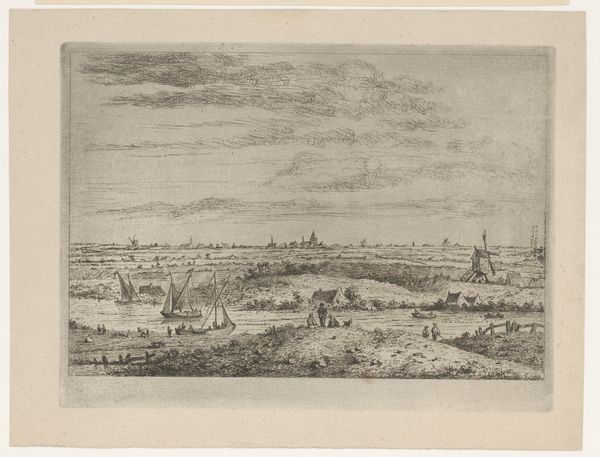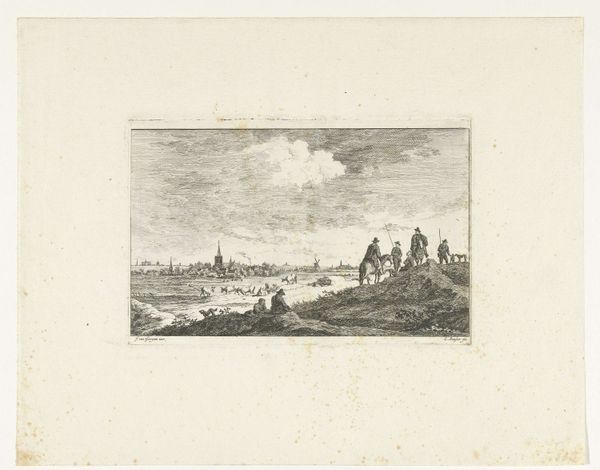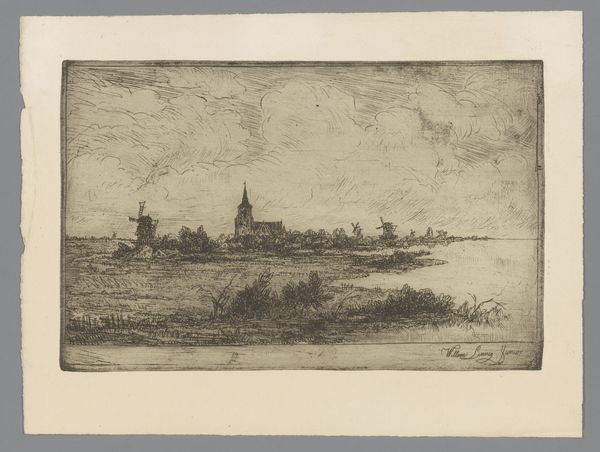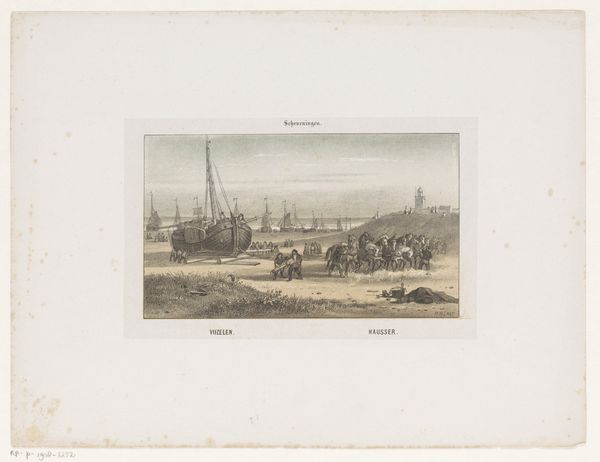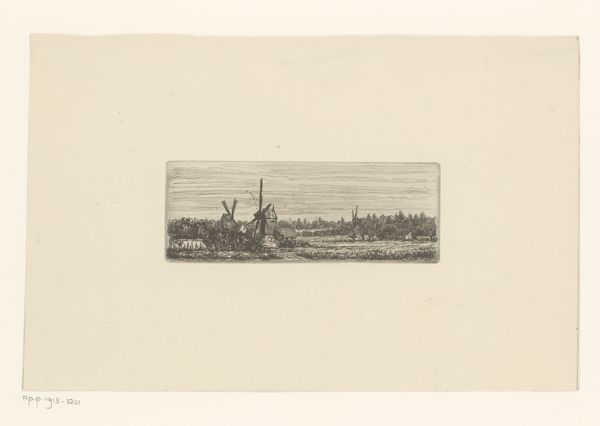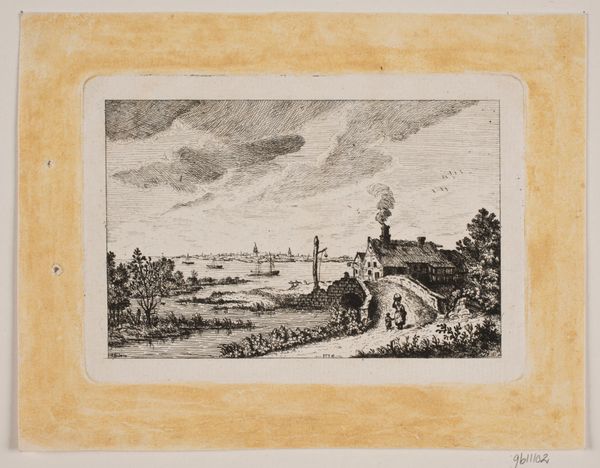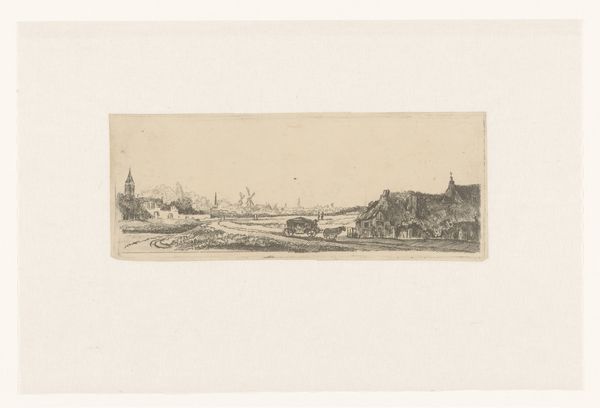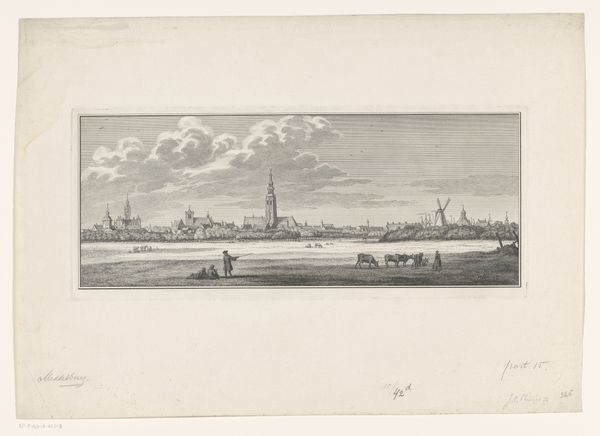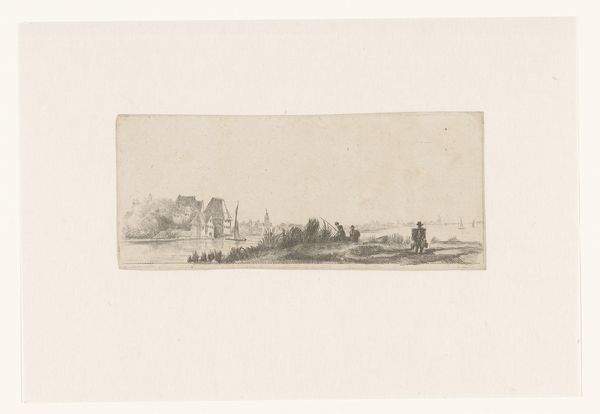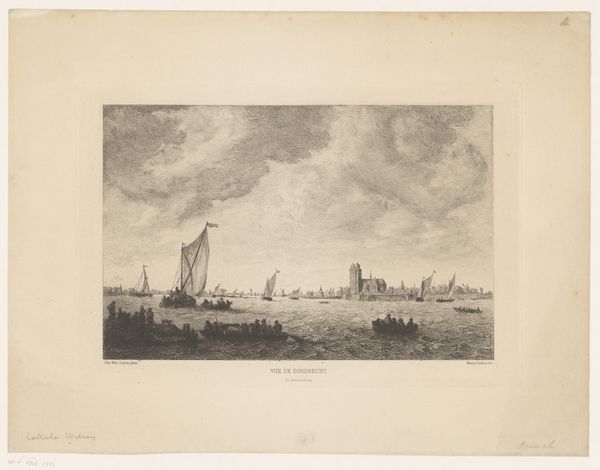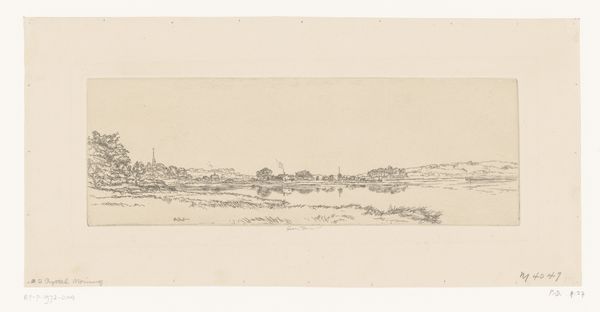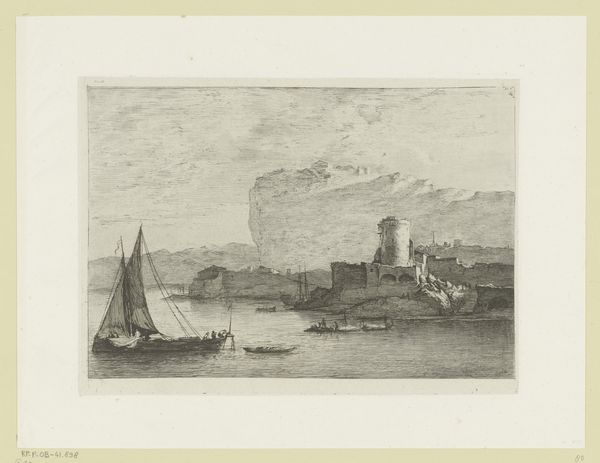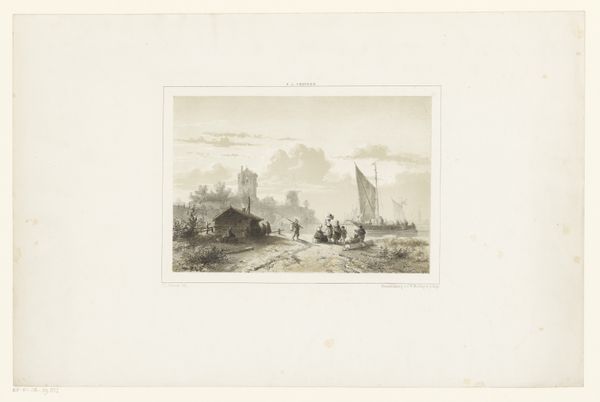
print, etching
#
dutch-golden-age
# print
#
etching
#
landscape
#
realism
Dimensions: height 241 mm, width 329 mm
Copyright: Rijks Museum: Open Domain
Curator: So much sky. I feel a real pull towards that distant skyline and those layered clouds, even though it's rendered with such delicate lines. Editor: Indeed. What we're looking at is Jean Théodore Joseph Linnig’s "Landscape Near Haarlem," from 1885. Linnig created this tranquil view using etching, a printmaking technique known for its fine detail. You can see how the lines almost vibrate. Curator: "Tranquil" is exactly the word! There's a meditative quality. Are those figures relaxing by the water's edge? Almost timeless, as if caught between the golden age it seems to recall, and something much more immediate. Editor: Yes, their presence is crucial. Dutch landscape painting has always had this complex relationship with national identity, especially the representation of "ordinary people," and with technological innovation visible in the sailing boats. In this particular artwork the far horizon emphasizes openness to trade and the Dutch republic's embrace of industry. Curator: I notice that horizon line too. A whisper of industry barely interrupting a sort of peacefulness. I get this curious sensation of time collapsing, a blend of history and quiet anticipation. I'm curious—did the flatness of the Dutch landscape play a part, allowing such a dramatic play of light? Editor: Absolutely. The horizon is almost like a stage for the sky. Think about the social conditions that helped shape artistic conventions and institutions to project cultural messages about the role of nature in relation to commerce. It allowed artists, even centuries after the Golden Age, like Linnig, to reference a romantic past whilst still hinting at social realities. Curator: It's interesting you say 'social realities'… because I was almost completely swept away with dreamy idealism. That vastness really sucks you in, and you suddenly become very small. Editor: And that feeling of smallness, in contrast with the big social shifts during the Industrial Revolution? The power structures implied by that… It adds depth, even to the simplest scene, making you consider how landscape shapes who we are, where we are and what forces drive it all. Curator: All these fine little lines, etching such huge feelings. A simple vista reveals the complexity and human experience, one little boat at a time. Editor: Absolutely. Linnig delivers a poignant contemplation, capturing a feeling rooted in the soil and reflecting the social horizon of its time.
Comments
No comments
Be the first to comment and join the conversation on the ultimate creative platform.
